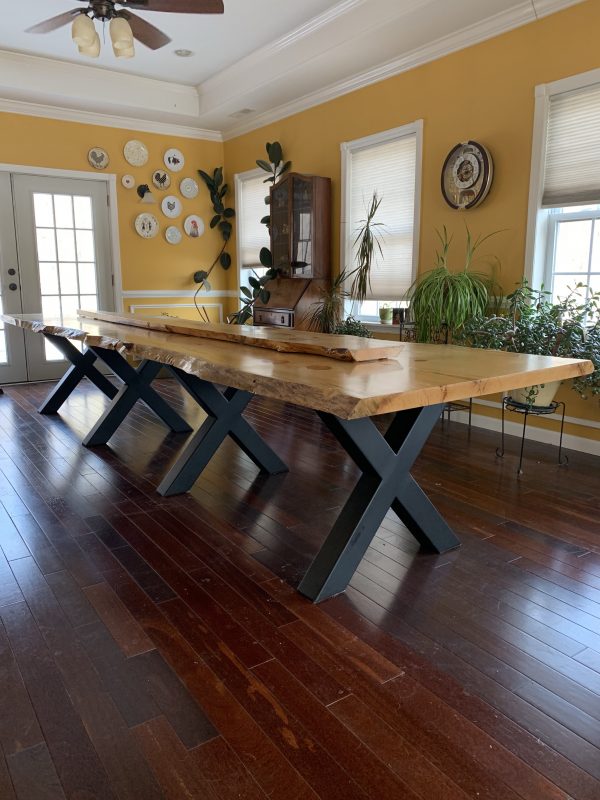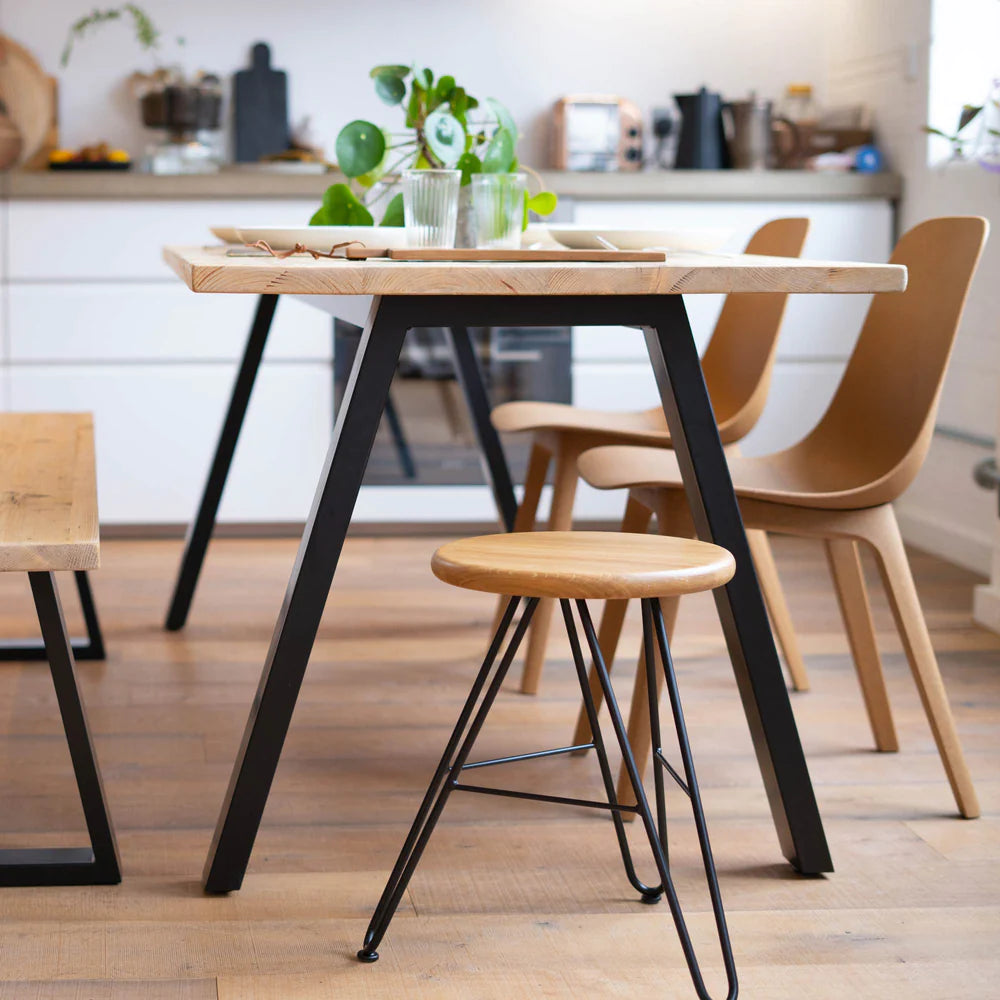Why Dining Room Table Legs Are Crucial for Your Table’s Stability
Why Dining Room Table Legs Are Crucial for Your Table’s Stability
Blog Article
From Standard to Modern: Find the Perfect Dining-room Table Legs for Your Design
The choice of dining-room table legs plays a pivotal duty in specifying the general personality of your space, connecting the gap between traditional workmanship and modern-day visual appeals. While traditional styles such as cabriole and transformed legs stimulate a feeling of ageless refinement, modern designs like barrette and geometric options present a chance for striking aesthetic interest. Evaluating the best equilibrium in between these designs calls for a nuanced understanding of your existing décor and personal taste. As you consider these elements, the concern remains: how can you flawlessly integrate these varied leg styles to create a harmonious eating experience?
Recognizing Table Leg Styles
The range of dining-room table leg styles can significantly affect both the visual appeals and performance of the area. Each leg design contributes one-of-a-kind visual elements and practical attributes, accommodating varied design preferences and use requirements. Understanding these designs is important for picking the right eating table that aligns with your overall indoor layout vision.
For example, tapered legs use a clean, classic look that can improve a space's beauty, while stand bases offer security and maximize legroom, making them ideal for smaller sized spaces. Barrette legs, a hallmark of mid-century contemporary style, introduce a commercial style, enabling for a ventilated, open feeling. In a similar way, trestle legs stimulate rustic charm, offering robust assistance and a feeling of eternity.
Wood legs can bring warmth and appearance, whereas metal options often convey a streamlined, modern vibe. Eventually, understanding table leg designs is vital for developing a cohesive eating area that mirrors personal style while guaranteeing usefulness and convenience.
Traditional Table Leg Options
When selecting dining-room table legs, traditional alternatives typically symbolize ageless elegance and craftsmanship. These designs reflect an abundant heritage and a dedication to high quality, making them perfect for those who appreciate traditional appearances.
One of the most renowned standard leg designs is the cabriole leg, defined by its stylish bent form. This layout often includes decorative carvings and is most commonly found in Queen Anne and Chippendale furniture. Another popular option is the turned leg, which flaunts a series of smooth, rounded shapes that supply a traditional look while maintaining security.
Additionally, the straight leg, while basic, supplies a unadorned and durable structure that can blend perfectly with a selection of tabletop designs. For those drawn to ornate outlining, claw-and-ball feet legs evoke a feeling of splendour and can act as a spectacular centerpiece in any kind of eating area.
Last but not least, pedestal bases, although not strictly legs, provide a different typical alternative that allows for sufficient legroom and can be perfectly sculpted. Each of these typical leg designs adds to the overall setting of a dining-room, marrying function with visual allure.

Modern Table Leg Styles
Modern table leg styles supply a diverse series of styles that emphasize innovative materials and clean lines. These layouts frequently prioritize capability while working check my reference as striking focal factors within a dining space. Minimal looks prevail, with legs crafted from materials such as metal, glass, and engineered timber, which add to a modern and ventilated feel.
One prominent style is the hairpin leg, defined by its slim, conical structure that offers stability without frustrating the table top (dining room table legs). This style is often discovered in mid-century modern furnishings and can easily complement numerous table shapes. An additional pattern is the use of geometric forms, where legs may handle asymmetrical or angular forms, including aesthetic passion and a touch of virtuosity

Blending Styles for Special Rooms
Commonly, house owners seek to create distinct eating areas that reflect their individual style by mixing different layout elements. This strategy permits the incorporation of varied aesthetic appeals, leading to a harmonious yet distinctive setting. Coupling a rustic wooden table with sleek, modern-day metal legs can produce a captivating contrast that elevates the space's general allure.
Additionally, incorporating vintage table legs with modern tabletops can stimulate a feeling of history while maintaining a modern-day sensibility. Such mixes not just display individual preference but likewise urge creativity, permitting house owners to curate an area that feels both personal and inviting.
Color plays a critical role in this mixing process; picking table legs that enhance or comparison with the existing color design can improve visual interest. For example, whitewashed legs can soften the daring of a dark table surface area, producing a balanced visual.
Tips for Choosing the Right Legs
Choosing the right table legs is crucial for achieving both capability and aesthetic appeal in your eating area. Begin by thinking about the general style of your space. Typical settings gain from legs that feature elaborate makings or turned styles, while modern rooms might call for sleek, minimalist designs.
Next, analyze the height and stability of the legs. dining room table legs. Common dining tables vary between 28 to 30 Click This Link inches in height, so make sure the legs enhance this dimension for comfort. Additionally, robust products, such as hardwood or metal, can improve stability and long life
Evaluate the leg shape as well-- choices include directly, tapered, or stand designs. Straight legs use a timeless look, while conical legs can add a touch of style. Pedestal bases provide sufficient legroom and are ideal for smaller sized rooms.
Conclusion
In summary, choosing the perfect dining space table legs calls for mindful factor to consider of both typical and modern designs. By balancing leg design, height, and product with the general Continue decor, a cohesive and inviting ambience can be achieved.
The variety of dining area table leg styles can considerably influence both the aesthetics and performance of the space. Eventually, comprehending table leg designs is essential for producing a cohesive eating area that shows individual design while making sure practicality and convenience.One of the most legendary typical leg designs is the cabriole leg, defined by its elegant curved shape. Straight legs use a timeless look, while conical legs can add a touch of elegance.In recap, choosing the ideal eating room table legs requires careful consideration of both modern and conventional designs.
Report this page